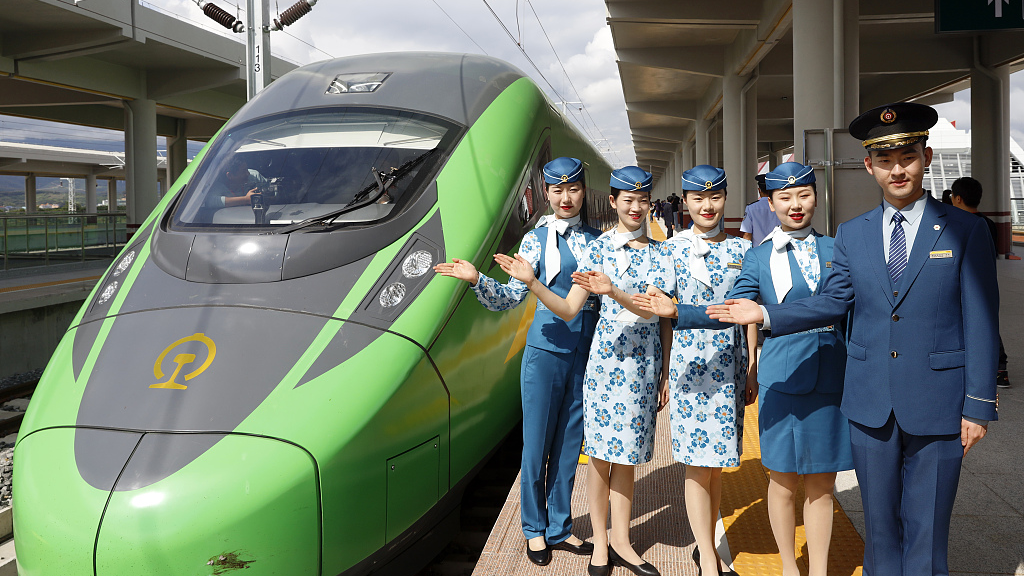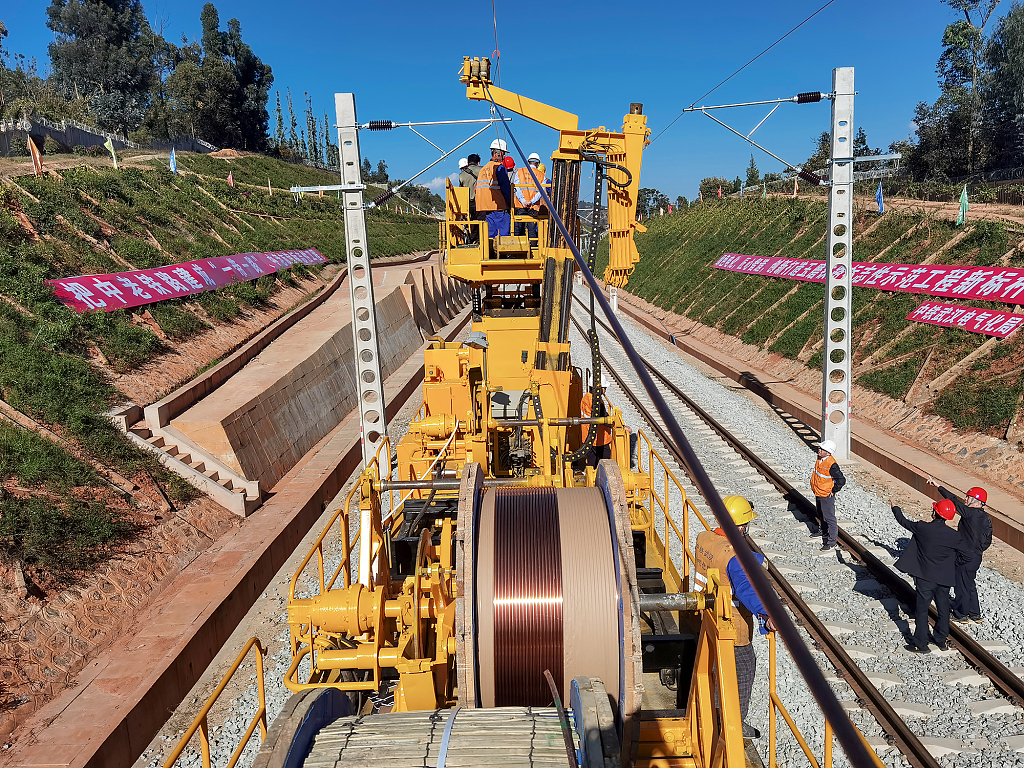
China-Laos Railway has shortened travel time from Vientiane to China-Laos border from 12 to less than three hours. /CFP
China-Laos Railway has shortened travel time from Vientiane to China-Laos border from 12 to less than three hours. /CFP
Editor's note: Liu Xiaoqi is a PhD candidate at the National Institute of International Strategy, Chinese Academy of Social Sciences. The article reflects the author's opinions and not necessarily those of CGTN.
China-Laos Railway, a landmark project connecting Kunming in southwest China's Yunnan Province with the Lao capital Vientiane, began operations today (December 3). This railway is a flagship project linking China's Belt and Road Initiative (BRI) with Laos's strategy of "transforming itself from a landlocked to a land-linked country." In Laos, the railway stretches 414 kilometers from Boten, a border port between southwestern China and northern Laos, to Vientiane in the south. The entire railway is over 1,000 kilometers long, with the section in China being over 508 kilometers. The railway is built according to Chinese management standards and technical standards, with a designed speed of 160 kilometers per hour. It is an electrified passenger and cargo rail.
China-Laos Railway is a landmark project of China-Laos friendship. After the inception of the BRI, China-Laos Railway is the first international railway mainly invested by China, built with Chinese equipment and directly connected with China's railway network. It provides more opportunities to promote people-to-people ties and enhance friendship between the two countries. Its has created more than 110,000 jobs for locals in Laos and helped villagers along the route build nearly 2,000 kilometers of roads and canals. In the subsequent operation and development process, both sides will continue to bring more visible and tangible benefits to ordinary people.
The railway has shortened travel time from Vientiane to China-Laos border from 12 to less than three hours. It is also expected to realize direct transportation and same-day access from Vientiane to Kunming, bringing great convenience to the people of China and Laos and the everyone along the route.
Furthermore, China-Laos Railway was built with great difficulty given the complex geological structures along the way and abundant rainfall throughout the year. The ratio of bridge and tunnel to the railway is 87.3 percent with 93 tunnels and 136 bridges, and the construction of the whole railway lasted 11 years.
Most of the construction materials for Boten-Vientiane section were imported from China, and the materials supply cycle was relatively long. No. 13 Road is an important materials transportation channel, and the road condition is poor. The distance from Boten to Vientiane is less than 700 kilometers, but it takes at least two to three days for freight cars to transport materials.

The China-Laos Railway is under construction, November 19, 2020. /CFP
The China-Laos Railway is under construction, November 19, 2020. /CFP
The Chinese and Lao people braved these these construction difficulties and forged a profound friendship in the process.
China-Laos Railway is a railway of cooperation. Laos has actively participated in and supported the BRI. The two sides signed the Laos-China Economic Corridor Cooperation Framework Agreement in 2019, laying a foundation for cooperation.
The two governments have attached great importance to the construction of large-scale infrastructure projects. The China-Laos Railway is an inter-governmental cooperation project promoted by the top leaders of the two countries.
Despite the spread of COVID-19, Laos attracted 21 Chinese investment projects worth $2.5 billion in 2020, mainly in mining, services, electricity, agriculture, infrastructure, supermarkets and hospitality industries. In the first half of this year, the volume of trade between the two countries topped $2.3 billion, posting a year-on-year increase of 48.1 percent.
In the future, the Regional Comprehensive Economic Partnership (RCEP) agreement will leverage the China-Laos Railway as a facilitator for the flow of people and goods, thus establishing a new pattern of open regional economic integration.
The RCEP agreement is a general policy that provides "software support" for trade and investment. China-Laos Railway, as a powerful infrastructure, provides "hardware support" for the two governments to effectively connect with the region and the world. Not only will it benefit China and Laos, but also contribute to the development of the Mekong Subregion and other countries.
China-Laos Railway is a railway of prosperity. It will inject vitality into the development of emerging industries in Laos, such as tourism and commercial real estate, new energy and enterprise digitization, which will bring more hope and prosperity to the local people.
This year marks the 60th anniversary of the establishment of diplomatic relations between China and Laos. With the implementation of China's 14th Five-Year Plan and the Laos' 9th Five-Year Plan, the complementary strengths of the two sides will be more prominent and provide broader space for prosperity and development. The people of both sides will work together to push the building of China-Laos community with a shared future to a new level in the next 60 years.
(If you want to contribute and have specific expertise, please contact us at opinions@cgtn.com.)

